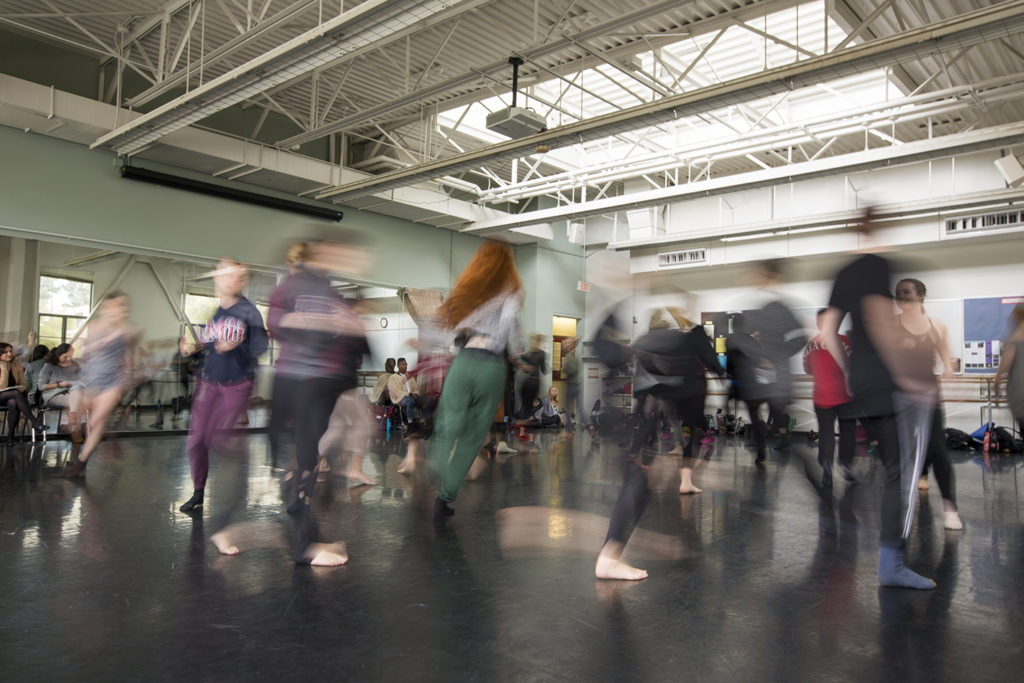
Those of us fortunate not to have to face the mortality of self or loved ones during this pandemic have been given these other parameters to consider for the past 10 months — time, space and movement. These three elements also happen to make up the very DNA of dance. Ironically, the pandemic that has halted live dance, rendering it down to the pixilation and latency of Zoom, actually operates according to similar values.
In our pre-COVID 21st century, live dance was happening, but it was not necessarily safe. Innovation in the digital age has been fueled by the quest to live beyond the reach of such anachronistic lugs as time and space. Zip. File. RAM. Paralleling digital innovation, we were becoming ever more stationary beings, unconscious of embodiment, momentum and proximity. Our denial of time and space — elemental laws of physics — could only yield our denial of motion.
Then COVID came along, forcing us to feel the empty hours of canceled activity, to widen our personal spaces, and to see the choreography of ourselves in relation to others in the grocery line. While we have struggled through this all too real performance of living, live performance took refuge in the simulacrum. “Alone together” performances have been thrilling to watch, perhaps, in part, because they push us dangerously close to those questions: Is this the future of live performance? Why go to the theater when this can come to my screen at home? Why risk the infection of touch when we can so gorgeously simulate union?
I believe live dance will come back strong, flowing along the very fissure the pandemic made to our values of compressing time and space. Now that we have been forced to acknowledge time, we have an opportunity to respect the artisanship of the dancer. Now that we draw meaning again from physical relationship, we have an opportunity to appreciate the craft of the choreographer. Now that we have been forced to widen our personal boundaries, we have an opportunity to view sprawling studios and cavernous theaters not as wasted spaces, but as life-saving ones.
Rosalynde LeBlanc Loo is associate professor and chair of the Department of Dance in the LMU College of Communication and Fine Arts. She has spent more than two decades in dance as a performer, choreographer and educator, and was a member of the Bill T. Jones/Arnie Zane Dance Company.
Tell Us Your Story
The COVID-19 pandemic has forced us to adapt and change many of the ways we do our work in almost every sector of society. Are there pandemic-related changes in your field of work or expertise that will last beyond the crisis?
Tell us in 250 words about the most important change, for better or for worse, that you see being long-lasting in your world of work. Email your reflection to magazine@lmu.edu, along with your name, email address, your relationship to the university, and your profession or area of expertise/work and we’ll post some to the LMU Magazine website on the Afterlife page in the coming weeks.—The Editor.
